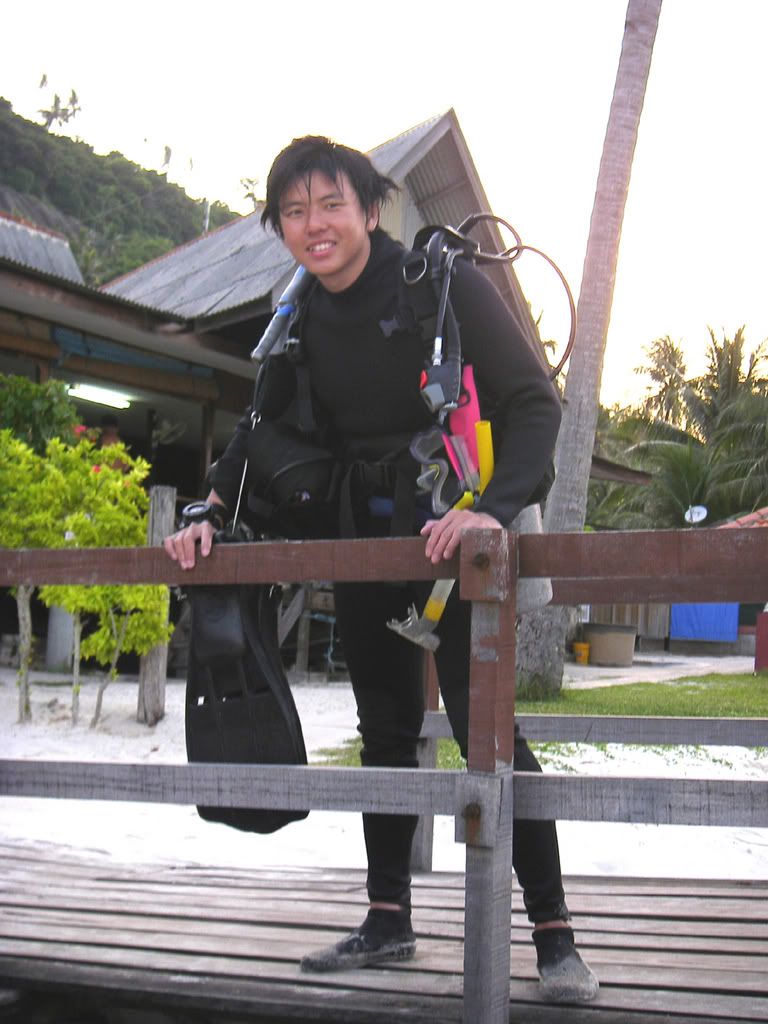 Fueled by the sighting of the crocodile fish during the last dive at Pasir Ris. I decided to dive at Pasir Ris again, hopefully to see it again. This dive was done with my friend, Sean Yit and we had Eugene to be our spotter as precaution. We prepared 2 tanks of 200BAR air supply per diver, hopefully giving us enough time to spot the fish again. In total, we clocked a total of 100 min bottom time over 4 successive dives between 11am to 2pm.
Fueled by the sighting of the crocodile fish during the last dive at Pasir Ris. I decided to dive at Pasir Ris again, hopefully to see it again. This dive was done with my friend, Sean Yit and we had Eugene to be our spotter as precaution. We prepared 2 tanks of 200BAR air supply per diver, hopefully giving us enough time to spot the fish again. In total, we clocked a total of 100 min bottom time over 4 successive dives between 11am to 2pm.
Visibility did not improved during the final dive. As the tide was receding, the current disrupt the easily disturbed seabed which is muddy containing high sediment contents, causing our visibility to be lost completely once we moved some distance from the shore. Predicting that the visibility will not improve soon, we decided to end the day instead. As our visibility was limited throughout, our sightings were thus extremely restricted, although we had some new sightings.

 On top of that, we spotted many Archimedes' spiral-shaped shell scattered between about 20m-50m from the shore as well as in the area around the breakwater. Many has hermit crabs residing in it and were actively moving on the seabed. We had the privilege to observe one hermit crab moving about as though it was scrambling with their shell overturn once in awhile. I tried to catch it on video, but was unsuccessful because of the visibility. Also, out of sheer luck, as I instinctively overturned one of the shell, I discovered that it was a living gastropod.
On top of that, we spotted many Archimedes' spiral-shaped shell scattered between about 20m-50m from the shore as well as in the area around the breakwater. Many has hermit crabs residing in it and were actively moving on the seabed. We had the privilege to observe one hermit crab moving about as though it was scrambling with their shell overturn once in awhile. I tried to catch it on video, but was unsuccessful because of the visibility. Also, out of sheer luck, as I instinctively overturned one of the shell, I discovered that it was a living gastropod.
The highlight of the sightings was during the last dive where I saw an unknown creature (to my knowledge) in a 10cm wide hole of a rock. It looked grey and look tubular curled up into a U-shaped. The only visible indication that it was living was what appeared to be a continuous moving parts located at the interior of the U-curl. As I tried to touch it with a glove, the body appeared soft. As I was doing so, it retreated further back into the hole until it was totally hidden.

In summary, although we did not fulfil our original objective of re-spotting a crocodile fish, we gained in many other aspects. First, we had many new sightings, thereby improving our impression of the biodiversity in the area. Secondly, we suspect that the area may be ever changing as the sea-pen which was dominant in June is replaced by the seaweeds. Thus making new discoveries of the area, regenerating a fresh surge of excitement towards the biodiversity of the beach...



No comments:
Post a Comment